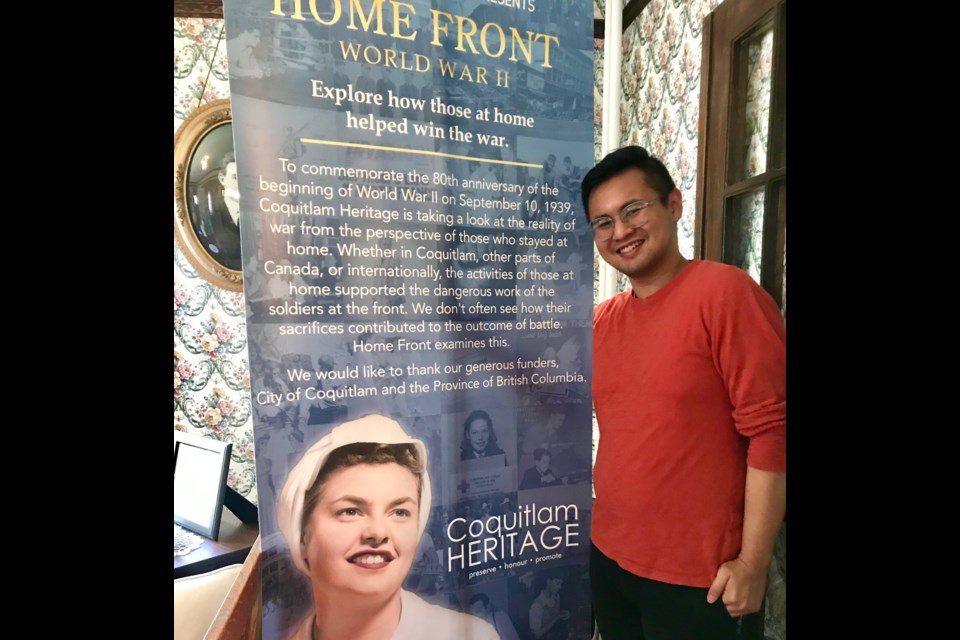From “sugar reports” and quilt fundraisers to food and clothes rationing and blood drives, Coquitlam residents did their part to prop up the troops and boost morale during the Second World War.
And their contributions can be seen in an exhibit that opened last month at Mackin House, curated by heritage managers Jasmine Moore and Tannis Koskela.
Titled Home Front: World War II, the display harkens to a dark time when men and women left their families to fight in the European and Pacific theatres and to defend Canada and the Allies’ interests.
Meanwhile, back home, the Wartime Prices and Trade Board (WPTB) controlled goods and those who didn’t follow the strict rationing regulations were guilted by the onslaught of propaganda ads.
Those messages to reinforce efficiency in the name of patriotism are a recurring theme in the new show.
Vancouver fashion historian Ivan Sayers offers more than a dozen examples of garments that were hand-knit or up-cycled during the early 1940s, including a wedding dress made from a silk parachute. Clothing patterns also had to get the WPTB approval stamp before they were sold and stitched up.
As for food, beans and eggs were pushed as protein substitutes, backyard “victory” gardens were encouraged and new recipes were developed showing how to use fat and bones for future meals.
“There was a lot of pressure to eat properly and by the book,” said Koskela during a tour Monday at Mackin House.
Still, “Coquitlam wasn’t as bad off with shortages as others” because Fraser Mills, the sawmill south of Maillardville and a big employer, was a protected industry as lumber was needed during the war.
Museum staff also cleared out a lower root cellar at Mackin House — a little-known room in the 1909-built house, off the kitchen — to convert into a mock air raid shelter.
The space, decorated with wartime maps and memorabilia, also includes a recorded loop of sirens in the distance.
Koskela said several visitors to the exhibit have recalled the sound of the wail, either as residents living in Coquitlam or Fraser Mills during the war years, or in their native countries during war time.
The display also features a photo of people at Essondale (later renamed Riverview Hospital) drawing their curtains when air raid warning signals sounded to make potential targets less noticeable.
Upstairs at Mackin House, the exhibit focuses on women’s war efforts (Vancouver-born Elise MacGill, who designed the Hawker Hurricane airplane, and the Canadian Women’s Army Corps); the resentment by overseas soldiers toward “zombies” (servicemen at home who didn’t see action); Japanese, German and Italian internment camps across Canada; and how children assisted with the war drives by collecting paper and rubber scraps, knitting clothing and mailing care packages.
Blood drives were also commonplace, with Coquitlam’s mayor being the first to roll up his sleeve.
The patriotism also wove its way into daily life with fabrics and jewelry including the letter “V” for victory while Canadian nickels during the war had morse code on the side that read “We Win When We Work Willingly”; examples of the garments, coins and rationing books can be seen in the exhibit.
Home Front: World War II at Mackin House (1116 Brunette Ave.) is on until June 6, 2020. Its official opening is Nov. 2 from noon to 3 p.m., with jazz vocalist Maya Rae performing songs from WWII, at 1 p.m. No registration is required; admission is by donation.



